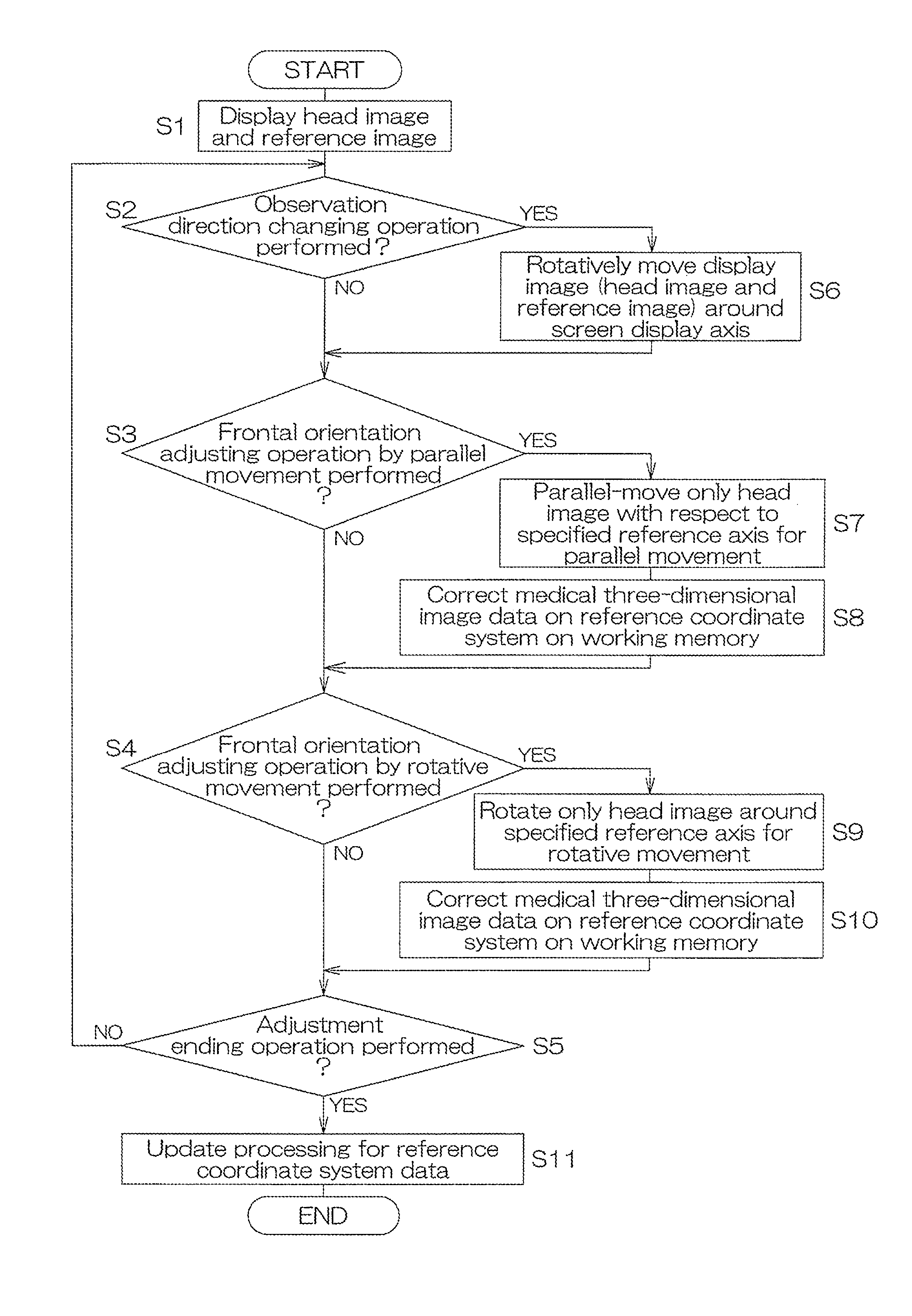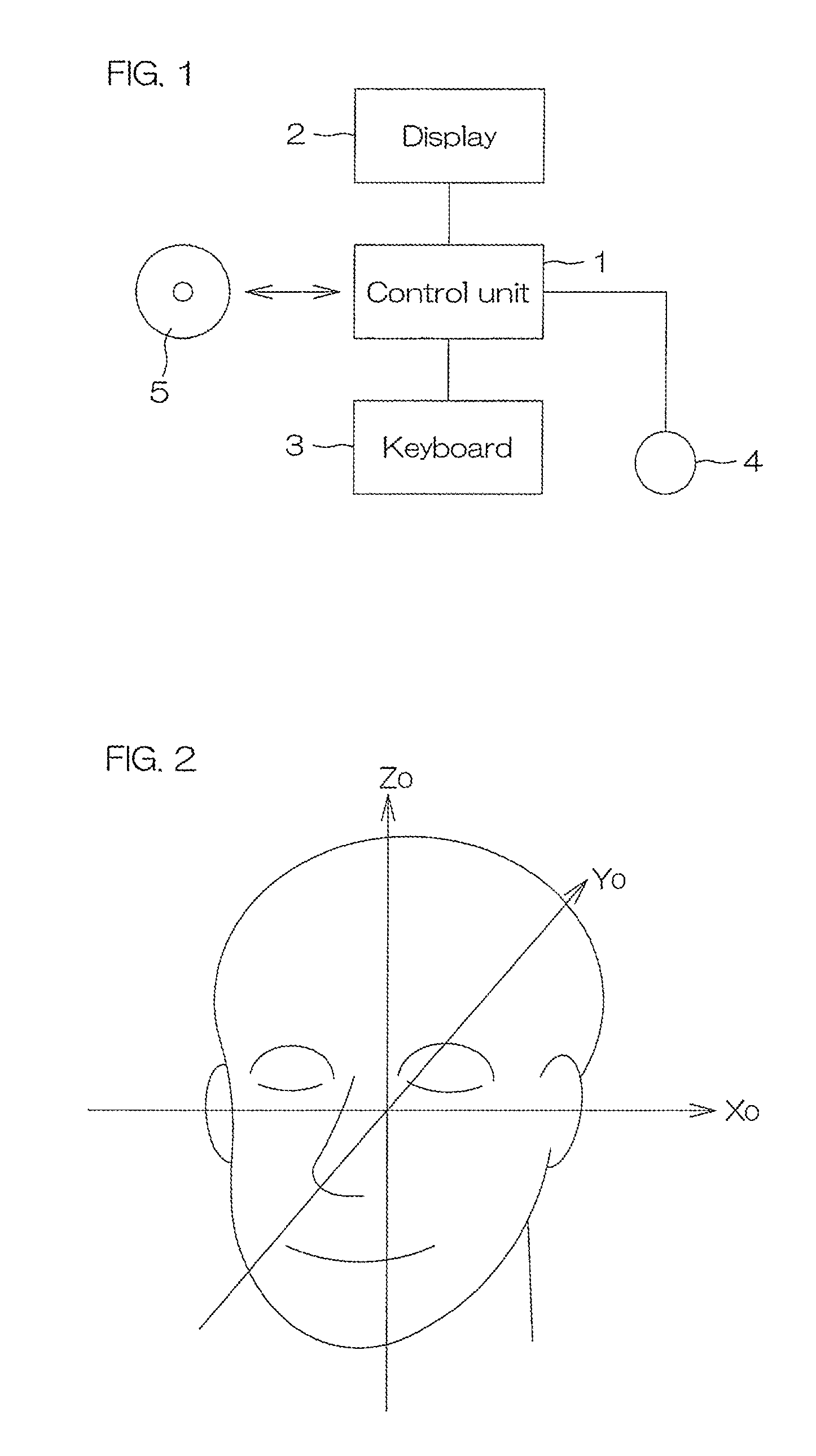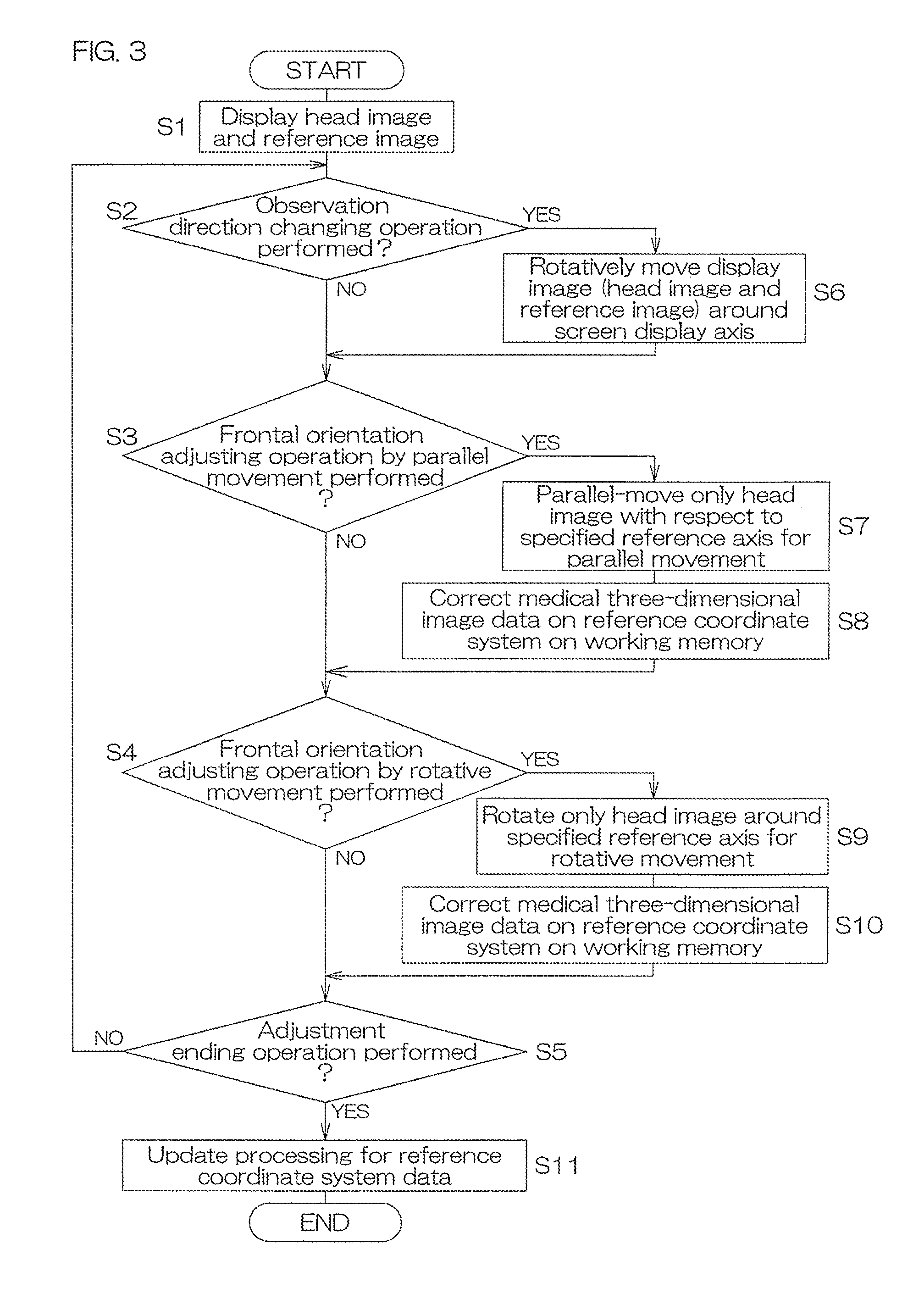Display Orientation Adjustment Device And Adjustment Program For Medical Three-Dimensional Image
a three-dimensional image and display orientation technology, applied in the field of three-dimensional image display orientation adjustment devices and program, can solve the problems of difficult to reflect a region, low clinical reproducibility, low validity, etc., and achieve low clinical reproducibility, high reproducibility, and low validity of ct image.
- Summary
- Abstract
- Description
- Claims
- Application Information
AI Technical Summary
Benefits of technology
Problems solved by technology
Method used
Image
Examples
Embodiment Construction
[0035]Hereinafter, preferred embodiments of the present invention are described with reference to the drawings.
[0036]FIG. 1 shows a configuration of an image processing device according to a preferred embodiment of the present invention.
[0037]The image processing device is realized by, for example, a computer such as a personal computer (PC). The image processing device includes a control unit 1 equipped with a CPU, a ROM, a RAM, and a hard disk, etc. To the control unit 1, a display (monitor) 2, a keyboard 3, a mouse 4, etc., are connected. On the hard disk of the control unit 1, a display orientation adjustment program according to a preferred embodiment of the present invention is installed from, for example, a storage medium 5, etc., storing the display orientation adjustment program.
[0038]The hard disk stores medical three-dimensional image data according to a predetermined three-dimensional reference coordinate system (body coordinate system: coordinate system having a referen...
PUM
 Login to View More
Login to View More Abstract
Description
Claims
Application Information
 Login to View More
Login to View More - R&D
- Intellectual Property
- Life Sciences
- Materials
- Tech Scout
- Unparalleled Data Quality
- Higher Quality Content
- 60% Fewer Hallucinations
Browse by: Latest US Patents, China's latest patents, Technical Efficacy Thesaurus, Application Domain, Technology Topic, Popular Technical Reports.
© 2025 PatSnap. All rights reserved.Legal|Privacy policy|Modern Slavery Act Transparency Statement|Sitemap|About US| Contact US: help@patsnap.com



